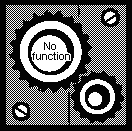| << Chapter < Page | Chapter >> Page > |
There is only one limitation on what a function can do: a function must be consistent.
For instance, the function in the above drawing is given a 5, and gives back a 16. That means this particular function turns 5 into 16—always. That particular function can never take in a 5 and give back a 14. This “rule of consistency” is a very important constraint on the nature of functions.
For instance, consider the function . This function takes both 3 and -3 and turns them into 9 (two different inputs, same output). That is allowed. However, it is not reversible! If you take a 9 and turn it into both a 3 and a –3 (two different outputs, same input), you are not a function.
 |
 |
This asymmetry has the potential to cause a great deal of confusion, but it is a very important aspect of functions.

Notification Switch
Would you like to follow the 'Advanced algebra ii: conceptual explanations' conversation and receive update notifications?